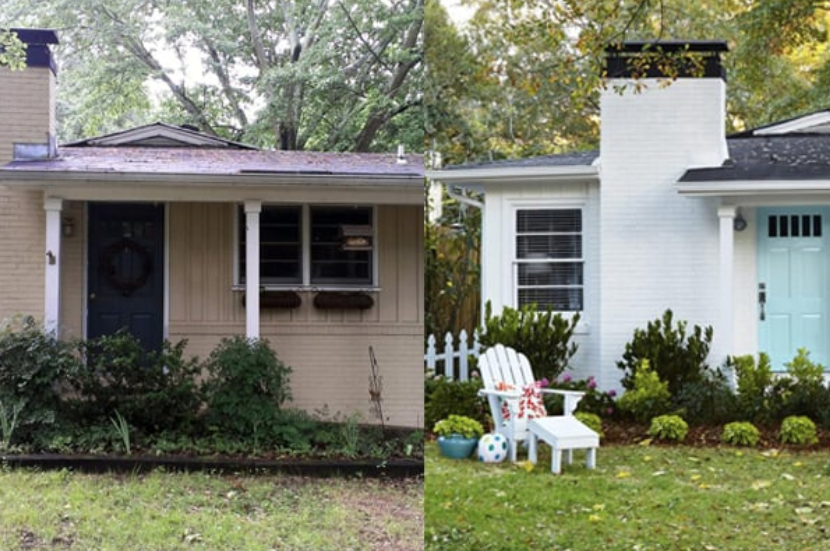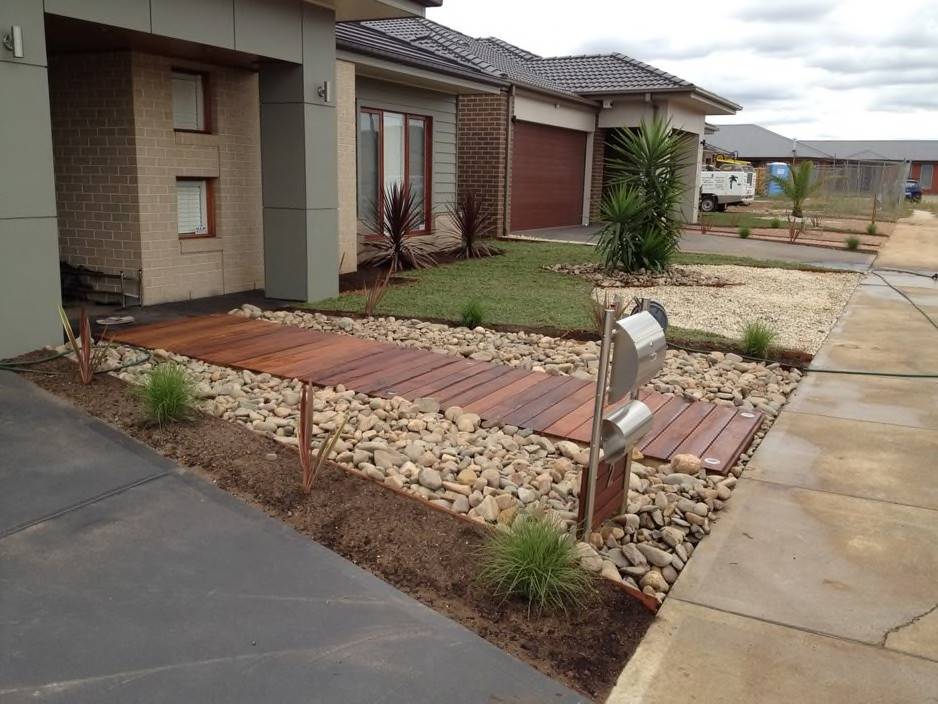
Low Tech

The vast majority of Realtors — 92% — suggest that sellers improve the “curb appeal” of a home before listing, according to new research. But how exactly should sellers go about that?
A recent report from by the National Association of REALTORS® (NAR) and the National Association of Landscape Professionals (NALP), Remodeling Impact Report: Outdoor Features, examines the process of updating a home’s outdoor exterior, from project cost to cost recovery, with an emphasis on the consumer experience.
It’s a hot topic coming out of the pandemic, a time when homeowners began to use outdoor spaces in new ways. Nearly all landscape professionals saw increased demand for contracting outdoor features during the pandemic, while 79% said that those outdoor project scopes increased in size. The addition of pools, a new patio and overall landscape maintenance were the most popular requests.
“The COVID-19 pandemic changed the way Americans use their homes for daily living, relaxation and entertainment,” Dr. Jessica Lautz, NAR’s deputy chief economist and vice president of research, said in the report. And it’s a trend that appears to be sticking. “Homeowners have embraced their outdoor spaces — transforming them into oases with pools, patios, plants and greenery.”
Each of the features Lautz listed can help attract buyers when the time comes, but the Remodeling Impact Report focused on 11 specific outdoor additions, offering the typical cost each: in-ground pool addition ($90,000), new wood deck ($16,900), outdoor kitchen ($15,000), new patio ($10,500), fire feature ($9,000), overall landscape upgrade ($9,000), landscape lighting ($6,800), irrigation system installation ($6,000), landscape maintenance ($4,800), tree care ($2,875) and standard lawn care service ($415).
From there, Realtor respondents provided estimates for cost recovery at closing time. Notably, standard lawn care service — the least expensive project — was reported to earn the highest cost recovery (217%). Lawn care was followed by landscape maintenance (104%), an overall landscape upgrade (100%) and an outdoor kitchen (100%). Meanwhile, in-ground pools and fire features showed the lowest cost recovery, 56%, faring just slightly worse than landscape lighting (59%).
And those findings may surprise homeowners. Within the report, the outdoor additions were also ranked with a “Joy Score” which determined homesellers’ overall satisfaction with each investment on a scale of 1-10. Based on thousands of respondent sellers’ feedback, all 11 project types earned a Joy Score of at least 9 with the pricey in-ground pool and landscape lighting add-ons earning a solid 10.
Despite that, very few Realtors recommend adding a pool in order to sell: just 1%. In general, they recommend the less expensive curb appeal updates for sellers: landscape maintenance, standard lawn care service and tree care.
“It’s no surprise that nearly all Realtors® and most homeowners place a high value on the curb appeal of a well-maintained yard,” NALP CEO Britt Wood concluded from the report. “Healthy outdoor living and green spaces help the environment, increase home values, make communities more desirable and improve people’s mental and physical health.”

The term ‘staging’ encompasses a lot of activities that help a home look its best. It might involve:
No! It can be a chaotic time and professional stagers work best when they aren’t distracted by the homeowner.
Most of our Sellers, after seeing their homes staged, wish they’d always lived that way. It’s not unusual for the Buyers of our listings to try to buy our furniture or hire our designers. That said, it’s also hard to see your home stripped of everything that made it ‘yours’. Of course, that’s the point of it – to help everyone else see themselves living there…but it can be an emotional roller coaster for the Seller.
While the answer depends on the home and circumstances, it’s been proven that staged homes sell faster and for more money than unstaged homes. Vacant homes make it hard for a Buyer to visualize themselves in. They wonder: where does the TV go? How big of a bed fits into the bedroom? How could I use that basement? Staging helps answer those questions for Buyers. If you can’t stage your entire vacant home, consider focusing on just the principal rooms. Exception: homes that are being sold as “fixer-uppers” are usually best left as a blank palette.

Thinking about selling?
If you’re thinking about selling your house, you’re likely hearing about the cooling housing market and wondering what that means for you. While it’s not the peak intensity we saw during the pandemic, we’re still in a sellers’ market. That means you haven’t missed your window. Realtor.com
“. . . while prospective home sellers may lament that they missed their prime window, in reality, this is still a terrific time to sell. In fact, according to a recent Realtor.com® home seller survey, 95% of sellers who sold their home in the past year got more than they paid for it.
Nonetheless, some of the more prominent pandemic trends have changed, so sellers might wish to adjust accordingly to get the best deal possible.”
The key to success today is being realistic and working with a trusted real estate advisor who can help you set your expectations based on where the market is now, not where it was over the past few years.
Here are a few things experts say today’s sellers need to consider.
At the peak of the pandemic frenzy, sellers held all the leverage because inventory was at record lows and buyers were willing to enter bidding wars over homes that were available. This year, the supply of homes for sale has increased as the market cooled. Even though inventory is still low overall, buyers today have more options, and with that comes more negotiation power.
As a seller, that means you may see more buyers getting an inspection, requesting repairs, or asking for help with closing costs today. You need to be prepared to have those conversations. As Ali Wolf, Chief Economist at Zonda, says:
“Today’s market is different than it was just six months ago. . . Sellers that want the contract to move forward should be willing to work with the buyer. . . Consider helping with the closing costs or addressing many of the items on the home inspection list.”
It’s not just that the number of homes for sale has grown this year. Buyer demand has also pulled back in light of higher mortgage rates. As a result, pricing your house appropriately so you can catch the eyes of serious buyers is important. Greg McBride, Chief Financial Analyst at Bankrate, explains:
“Price your home realistically. This isn’t the housing market of April or May, so buyer traffic will be substantially slower, but appropriately priced homes are still selling quickly.”
You don’t want to overreach with your price and deter buyers. At the same time, you don’t want to undervalue your home and leave money on the table. This is another area where an agent’s expertise comes in handy.
Buyers have more options and are more particular about their investment since it costs more to buy a home given today’s mortgage rates. As a result, you need to make sure your house shows well. As an article from realtor.com says:
“To stand out in the market, sellers should make their home attractive to buyers, which usually means some selective updates.”
This could include everything from staging the home, to making small cosmetic updates, tackling repairs, or undergoing renovations. A trusted real estate professional will help you assess what may be worthwhile to do compared to other recently sold homes in your area.
To sum it all up, your house should still sell today and move quickly if you’re realistic about today’s market. As a press release from Zillow puts it:
“. . . sellers need to do things right to attract the attention of these buyers — pricing their home competitively and making their listing attractive to online home shoppers.”
For expert advice on how to quickly sell your house in a shifting market, let’s connect.

Keep it simple with low maintenance!

Low maintenance landscaping


1. Complex combinations of materials is the main trend in the fashionable hearth.
2. Do not be afraid of marble on walls, floors, and backsplash.
3. Minimalism
4. Retro